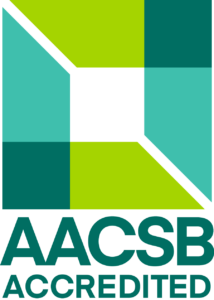Data Analysis in Economics
- Credits: 3
- Ending: Credits
- Range: 2C
- Semester: summer
- Year: 1
- Faculty of Economics and Finance
Teachers
Included in study programs
Teaching results
The objective of the course is to provide students with fundamental knowledge and skills in the areas of statistical methods, econometric analysis, and the application of the statistical software STATA. The course emphasizes practical work with data and their interpretation in the context of social and economic phenomena. Students will become familiar with the basics of statistical research, data visualization, analysis of bivariate and multivariate relationships, diagnostics of regression models, and an introduction to causal inference.
Upon completing the course, students should acquire:
a.) Knowledge of basic statistical methods, principles, and assumptions of regression and model diagnostics. Understands the difference between correlation and causality. Can effectively work with STATA software for data processing and analysis.
b.) Skills to process, visualize, and analyze data in STATA. Can apply statistical and regression methods to practical problems.
Indicative content
Week 1: Introduction to Research
Methodology of statistical research
Statistical method and logic of statistical reasoning
General laws and theories: objectivity and critical realism
Week 2: Introduction to Statistics and STATA Software
Statistical method and logic of statistical reasoning
Importance of significance level when studying the entire population
Analysis of quantitative research studies
Week 3: Basics of STATA Software
Getting acquainted with the STATA environment and its functions
Inserting and importing data into STATA from economic databases and various data files
Basic data management: opening, browsing, and modifying variables
Generating and labelling variables, data subsets
Week 4: Descriptive Statistics
Creating frequency distributions and summary statistics
Data handling: attaching, merging, and transforming data
Basics of graphing in STATA
Week 5: Data Visualization
Basics of graph creation
Visualization of continuous and categorical data types
Visualization of unconditional relationships
Week 6: Bivariate Inferential Statistics
Correlation and its applications
Independent t-tests, analysis of variance (ANOVA), chi-square tests
Week 7: Simple Linear Regression and Econometric Model
Introduction to regression analysis and the principle of the least squares method
Assessing model quality: model fit, hypothesis testing, and prediction
Week 8: Interaction Effects in Regression
Definition of interaction effects and their analysis
Working with interaction variables (continuous and discrete dummy variables)
Week 9: Assumptions and Diagnostics of Linear Regression
Correct model specification: linearity, additivity, multicollinearity
Assumptions about residuals: homoscedasticity, normality, and independence
Identifying influential observations: leverage, DFBETA, Cook's distance
Week 10: Introduction to Causal Inference
Why causal inference? The difference between correlation and causality.
Potential Outcomes Framework
Natural experiments and basic concepts of causality: Randomization and Counterfactual scenario
Week 11-13: Replication of Studies and Presentation of Projects Using Linear Regression, Data Handling, and Visualization
Presentation of examples using linear regression on selected case studies from public policy (discrimination in the labor market, the impact of smoking on health, the effect of increased tax on the price of sugary drinks, measuring willingness to pay for reducing environmental pollution rates from textbooks and other Doing Economics or practical studies from IFP, UHP, and other analytical units)
Support literature
Mehmetoglu, M., & Jakobsen, T. G. (2022). Applied Statistics Using Stata: A Guide for the Social Sciences.
Lukáš Laffers (2024) Pravdepodobnosť a štatistika 1: Open Access e-text: https://lukaslaffers.github.io/pas1/
Lukáš Laffers (2021) Moderná aplikovaná regresia 1: Open Access e-text: https://static1.squarespace.com/static/52e69d46e4b05a145935f24d/t/64a0a2214abdb23994e932a2/1688248868079/MAR1_poznamkyMain.pdf
IFP (2016) Ideálny čas pre adresnejšie zdanenie fajčiarov: Open Access e-text: https://www.mfsr.sk/files/archiv/priloha-stranky/19972/81/Idealny-cas-adresnejsie-zdanenie-fajciarov.pdf
IFP(2019) V nájme ďalej zájdeš Podpora bývania na Slovensku: Open Access e-text: https://www.mfsr.sk/files/archiv/24/Podpora_byvania_analyza.pdf
CORE Team, The (2018). Doing Economics. Open Access e-text https://core-econ.org/doing-economics. CORE Team
Cunningham, S. (2021). Causal Inference: The Mixtape. Yale University Press. (Chapters 4 and 5)
Requirements to complete the course
20 % - activity during seminars
50 % - assignments
30 % - final exam
Student workload
Total study load: 78h
Out of that:
participation in lectures 26h,
preparation for seminars 26h,
assignments 26h
Language whose command is required to complete the course
English

